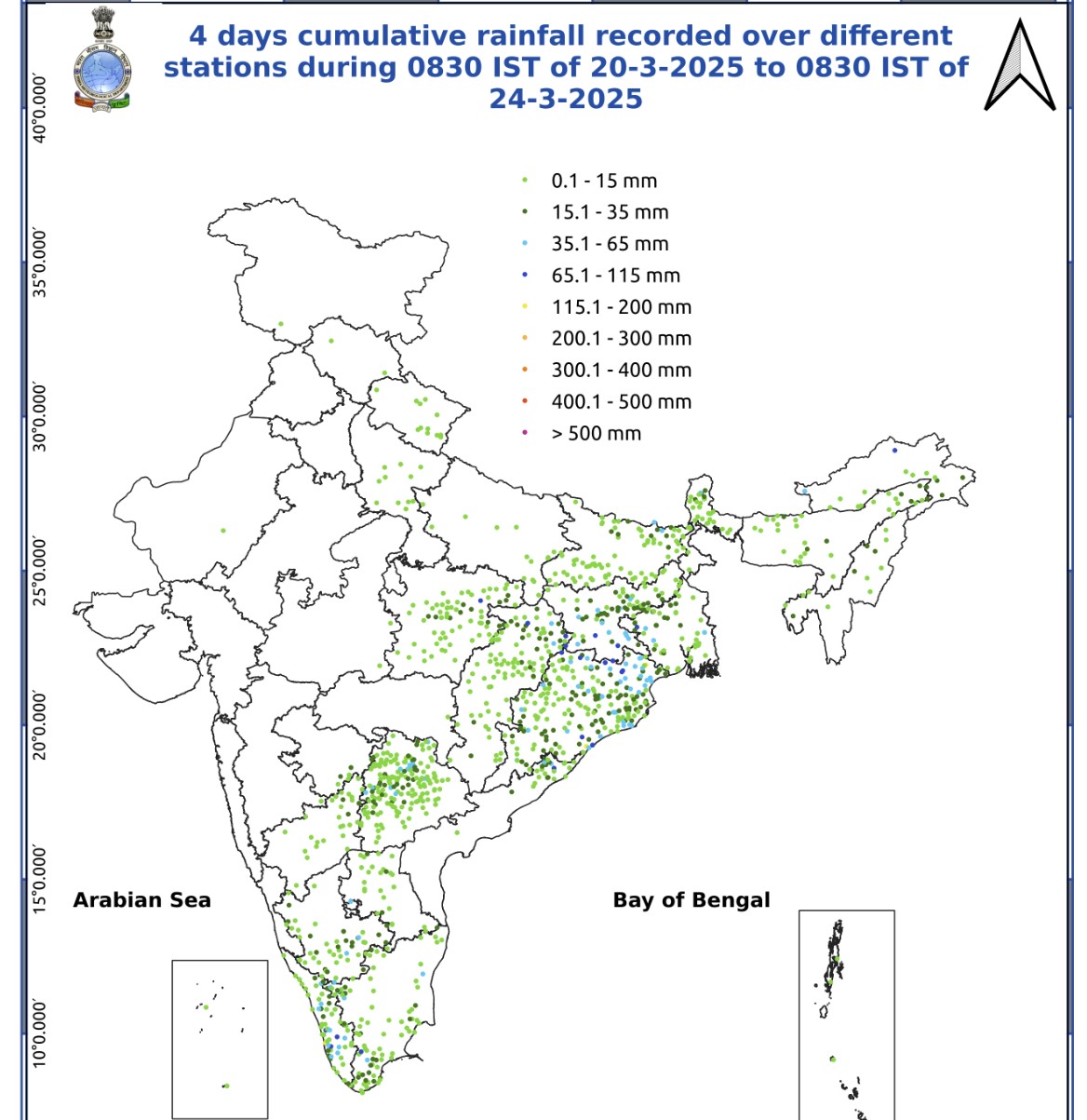Severe Weather Strikes Odisha: A Synoptic Overview for India

On March 22, 2025, Odisha India faced the wrath of nature as unseasonal rain, hailstorms, thunderstorms, and lightning swept across the state, leaving a trail of destruction. As a meteorologist, I bring you an analysis of this high-severity weather event that claimed lives, injured dozens, and damaged hundreds of homes, while offering insights into what lies ahead for the region.
The Event Unfolds India
In the last 24 hours leading up to March 22, Odisha experienced a fierce combination of weather phenomena. Official reports confirm that at least two people lost their lives due to lightning strikes—one in Ganjam district and another in Puri district. In Mayurbhanj district, a hailstorm injured 67 individuals, with seven in critical condition requiring hospitalization. Across the state, over 600 houses suffered damage, with Mayurbhanj bearing the brunt of the hailstorm's fury.
The first fatality, a 15-year-old Class 10 student named Rajesh Kumar Goud, was struck by lightning near Narayanpur in Ganjam's Patrapur block while returning home. In Puri, 23-year-old Manoj Kumar Nayak met a similar fate at Gobardhanpur village while working in a paddy field with his family. Meanwhile, in Mayurbhanj, the hailstorm wreaked havoc, completely destroying 350 homes and partially damaging 250 others across 18 villages in Bisoi block and 39 villages in Bangirposi block. Beyond Mayurbhanj, reports of house damage also emerged from Keonjhar, Nabarangpur, and Nuapada districts.
The rain and thunderstorms caused additional chaos. In Berhampur town of Ganjam district, waterlogging disrupted daily life, with floodwaters even entering MKCG Medical College Hospital, inconveniencing patients. A heroic rescue unfolded in Subudhi Colony, where fire personnel saved a 54-year-old visually impaired woman trapped by rising waters in her home.
Meteorological Insights
This destructive weather was driven by a potent mix of atmospheric instability, moisture, and strong wind dynamics—classic ingredients for thunderstorms and hail. The India Meteorological Department (IMD) reported that the unseasonal conditions were fueled by a regional weather system, leading to gusty winds, lightning, and hail across multiple districts. The IMD's Bhubaneswar Meteorological Centre issued an evening bulletin on March 22, forecasting continued severe weather for the next three days.
For the next 24 hours (March 23), an orange warning (be prepared) has been issued for districts like Jagatsinghpur, Cuttack, Dhenkanal, Angul, Deogarh, and Sundargarh, where thunderstorms, lightning, and hail with wind speeds of 50-60 kmph are expected. Heavy rainfall (7-11 cm) is also likely in Balasore, Bhadrak, Jajpur, Kendrapada, Mayurbhanj, and Keonjhar. A yellow warning (be aware) extends to Jharsuguda, Sambalpur, Bargarh, Sonepur, Boudh, Nayagarh, Kandhamal, Kalahandi, Puri, Gajapati, Ganjam, Rayagada, Koraput, and Malkangiri, with wind speeds of 40-50 kmph anticipated.
This weather pattern is unusual for late March, a time when Odisha typically transitions toward pre-monsoon heat. The presence of hail and heavy rain suggests an intrusion of cooler, unstable air masses clashing with the region's warm, humid conditions—a recipe for severe convective activity.
Response and Relief
The Odisha government has acted swiftly. District Collector Hema Kanta Say reported that relief operations are underway in the hardest-hit areas of Bisoi and Bangirposi, with affected families receiving polythene sheets, cooked food, and dry rations. Urban Development Minister KC Mohapatra visited Bisoi, assuring residents that Chief Minister-led compensation efforts would reach them within two days. The scale of the disaster has prompted a robust rehabilitation push, especially for those who lost their homes entirely.
What Lies Ahead
For my fellow Indians in Odisha, vigilance is key. The IMD's three-day forecast signals that the severe weather is not yet over. Residents should prepare for more thunderstorms, lightning, and potentially damaging winds. Avoid open fields during storms to reduce the risk of lightning strikes, secure loose objects to protect against gusts, and stay updated via local weather alerts.
This event underscores the unpredictability of weather in a changing climate. As we move deeper into 2025, Odisha—and indeed all of India—must brace for more such anomalies.
SHOCKING Summer 2025 Forecast for Europe: Heatwaves, Droughts, and Floods Incoming!
Founder and chief forecaster of the Pogodnik service. He has many years of experience in the meteorological service. He is the author of numerous scientific publications and popular articles about the weather.




